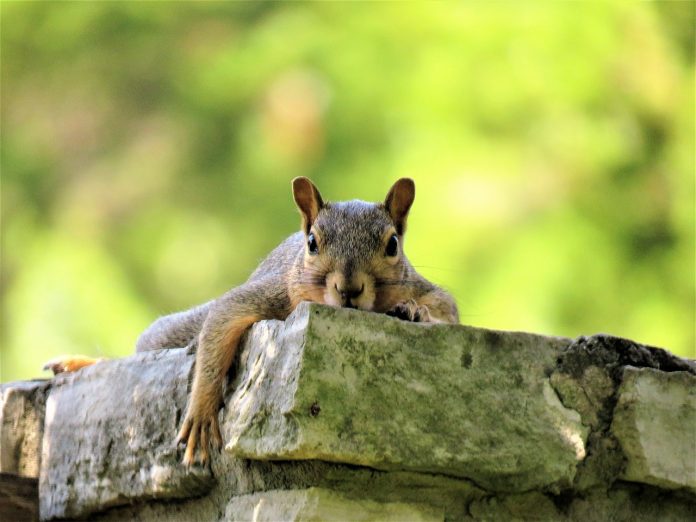Ohio is home to four species of tree squirrels — eastern fox squirrels, eastern gray squirrels, red squirrels and southern flying squirrels. Although squirrels are adorable and fun to watch, they can cause damage to buildings; invade attics; dig up gardens; gnaw on electrical and irrigation lines; carry fleas, mites and diseases and feed on a variety of fruits, nuts and other crops and plants. It’s no surprise not everyone wants to share their yard or their home with squirrels.
Use this guide to keep squirrels away from your house and prevent potential damage.
Managing squirrel populations in your yard
There are plenty of reasons squirrels enjoy living in your backyard, especially if there is plenty of shelter provided by trees. Do you have a bird feeder, trees that produce nuts or plants that produce fruit? Even better. Squirrels live in trees and they will feed on acorns, nuts, fruits, berries, corn, fungi, flower bulbs and bird seed. These traits make them highly adaptable to urban and suburban areas that predators avoid.
If you have a squirrel problem, it’s likely you’ve provided the perfect conditions for squirrel survival without trying. Fortunately, a few management techniques can keep populations in check and keep squirrels out of your house.
Trim your trees. Trimming tree branches back at least 8 feet from your roof can prevent squirrels from jumping on it. Likewise, trimming tree branches in your yard back at least 8 feet from neighboring trees can prevent squirrels from jumping on them.
Prevent climbing. You can prevent squirrels from climbing and, subsequently, nesting in trees in your yard by attaching loose-fitting metal collars with springs to your trees. You can also prevent squirrels from climbing poles this way.
Exclusion. Like many animals, squirrels will enter homes through holes that are already present. You can prevent these unwelcome guests from taking up residence by closing openings with wire mesh.
Trapping. If your yard is extremely overpopulated, you may have to consider using traps to get it back under control. Both live and kill traps are available, just be aware relocation may be illegal where you live and euthanization will still be necessary with the use of live traps. Kill traps such as box traps and body-gripping traps can be fastened to branches with bait on the trigger and at the entrance of the trap to entice the squirrel to go in. Pre-baiting before setting the triggers may increase the trap’s effectiveness.
Getting squirrels out of your home
Chasing a panicked squirrel inside your home can result in damage. It’s best to keep your calm and provide an exit for the squirrel.
Steps to take
- Open door or window and block off the room.
- Wait for the squirrel to exit.
- Locate the hole that the squirrel entered your home through.
- Seal the opening.
Squirrels in your fireplace and chimney. If your squirrel problem is isolated to your fireplace, close the damper, block off the room and open an exterior door or window and allow the squirrel to escape. However, if the squirrel is inside the chimney flue, you’ll have to lower a 1/2-inch diameter rope into the chimney and down to the damper from the roof. Make sure the upper end is anchored, so the squirrel can climb out. Once the pest has vacated, cover your chimney to prevent further incidence.
Squirrels in your attic. Getting squirrels out of your attic can be a little trickier, especially at this time of year, because you’re tasked with determining whether or not any baby squirrels are living up there as well. You’ll have to locate the squirrel’s nest to know for sure. If there are no babies, you can scare the squirrel out by banging the rafters inside the attic. If the squirrel is already gone for the day, you can proceed to seal its entrance with 1/4-inch hardware cloth or with sheet metal. Be sure to extend the seal at least 6 inches beyond the hole. If there are babies nesting in your attic, wait until they are old enough to leave the nest (about 12 weeks old). Then locate the mother’s entrance and install a one-way door. When all the babies have left the nest, replace the one-way door with 1/4-inch hardware cloth or with sheet metal to seal the entrance.












8 inches?? I assume you mean feet. Might want to correct that.
Thanks for catching that.